|
The Places and the Literature
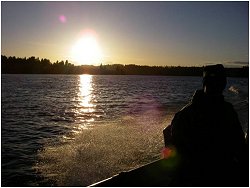 Just in case you think that I have written this article about specific places to go, I apologize for leading you on. There are just too many to mention. What I hope that I can do, however is point you in the right direction for locating sources of information that will help you locate them yourself. Just in case you think that I have written this article about specific places to go, I apologize for leading you on. There are just too many to mention. What I hope that I can do, however is point you in the right direction for locating sources of information that will help you locate them yourself.
There are literally thousands of miles of shoreline along the bluff’s beaches, bays, harbors and tidelands of the Pacific Coast. Puget Sound alone encompasses around 2,500 miles, so attempting here to give you a definitive list of places to go, would take many hours of research and too many words. There are many good references for that however, including ones that are online. Do “Google” searches for Puget Sound fly fishing and you may come up with a site like The Avid Angler, which writes,
Puget Sound, including Hood Canal and Possession Sound, is one of the largest estuaries in the United States. … All the species of pacific salmon, steelhead, sea-run cutthroat and Dolly Varden char are available off the beaches and/or from a boat with sea-run cutthroat, silver salmon and pink salmon (in odd years) being the primary targets for fly anglers from the beach. The Sound allows an angler instant access to fishing that is in many cases only minutes from the large metropolitan city of Seattle and its surrounding suburbs (The Avid Angler, 2007).
The Avid Angler goes on to divide the sound into different fishing regions, with links to fishing reports for those regions. So if you wish to know what the current catch is, you might start there.
If you are looking for more specific places to go in the Puget Sound area, another Google search might get you to Fly Fishing for Coho Salmon in Puget Sound, an article by Scott Richmond for Westfly. This is a great article for fly fisherman looking for specific spots and times of the year, techniques, and flies to hook Puget Sound Coho. Mr. Richmond writes, an enticing article beginning,
“…the Northwest offers some excellent saltwater opportunities. While you won't find turquoise seas and tropical sunshine, you will find speedy, leaping fish that can make both your heart and your reel sing” (Richmond, 2001).
Try a Google search for just for salt water fly fishing for Pacific salmon and you might hundreds of possibilities. But you can narrow it down if you know what you are looking for. One place it might lead you is to an article or two by of one of the masters himself, Barry M. Thornton, who writes saltwater fly fishing articles for Fishing in British Columbia. There is so much information available now on the web, that the possibilities are endless.
The point is that with a little research before your trip, you should be able to make it a success, and the best source of information in my mind is the books that I have talked about throughout this article. Read the books about locating salmon in the salt and you will be well on your way.
One of best and most recent books written about fly fishing the salt - Fly Fishing the Pacific Inshore, Strategies for Estuaries, Bays, and Beaches by Ken Hanley. This book covers most of northwest saltwater species, including all of the Pacific salmon. It is rich with factual information about the saltwater inshore habitat, where to locate fish, and as the subtitle indicates, strategies for catching them. In addition to the many others, Mr. Hanley profiles the saltwater species, including the five Pacific salmon species, talks about the equipment that he prefers, and gives a useful list of flies to for each of varieties of fish. There are color plates and recipes for the all of the flies mentioned in the book.
Saltwater Fly Fishing for Pacific Salmon, by Barry M. Thornton is a reference that you cannot do without. Mr. Thornton’s book is not quite as scientific as Ken Hanley’s, but it is filled with wisdom that is indispensible for any angler desiring to fly fish the salt. It is a book written specifically, as the title implies, about fly fishing for Chinook, Coho, and Pink salmon, with information about the fish, how to locate them, the tackle, techniques and flies to use. Most importantly, you will find anecdotes and instructions that come from Mr. Thornton’s understanding of the way salmon act around bait and take flies. That can only come from years of experience and a keen sense of observation. You might be surprised at how simple he makes fly fishing for Pacific salmon sound. You won’t find a lot of colorful plates of flies and patterns in this book, but you might find that you don’t need them. He does have a list of his favorite flies with their recipes, which he says, are “only those patterns I consider the elite, the tried, and the true (Thornton, 1995, pp. 127-133). What more do you need?
Salmon to a Fly, Fly Fishing for Pacific Salmon in the Open Ocean, by Jim Crawford is a book that at first appears to be just another collection of fly fishing stories. I learned, though, that it is much more than that. The book is a collection of fly fishing experiences for the 5 varieties of Pacific salmon broken down into the different regions around the coast and islands of British Columbia, each building on the other. This is not a book that you can just skim through, but when you read it as a whole it all comes together and makes sense. It is, like Barry M. Thornton’s book, filled with the wisdom that comes from years of experience and with information that can make anyone a successful fly fisher for Pacific Salmon.
Fly Fishing for Pacific Salmon, by Bruce Ferguson, Les Johnson, & Pat Trotter is probably the only book that needs little introduction. It was written in 1985, and probably the first of the genre. It is chock full of factual information about the species, what they feed on, how to find them, fishing techniques, tackle, and lots of fly patterns. It was my first book about the subject at a time when I could not find any others and I have made good use of it. The book covers fly fishing in salt and fresh water, most of it written in a scientifically factual style. It could in fact be used to teach a course in the art of catching the Pacific salmon on a fly. There are color plates and patterns for close to 200 flies broken down by into different categories based on whether they are for salt or freshwater. It is a book that should be in the library of any serious fly fisherman. The authors have recently collaborated on and published an update to this book, entitled Fly Fishing for Pacific Salmon II. Unfortunately, I have not had the chance to read it yet, but I am looking forward to picking it up as an addition to my library. I know it has to be good based on what I know of the first.
So, if you are new to Pacifi Salmon fly fishing in the salt, by all means, read the books, do a little research, tie some flies and get out there. I hope this article has helped.
SPB
Books Mentioned in This Article
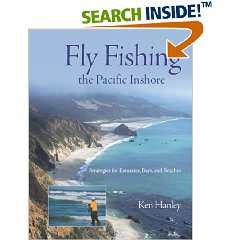  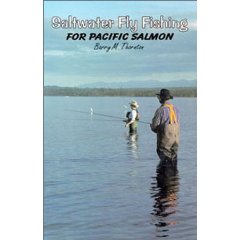  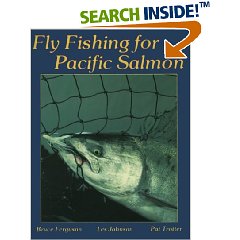  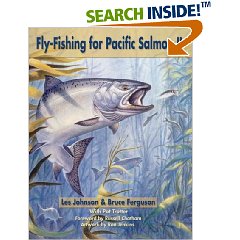  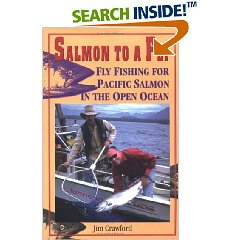 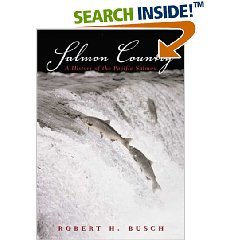
The Fish and the Flies <<Previous Page----------------Next Page >> Bibliography |
